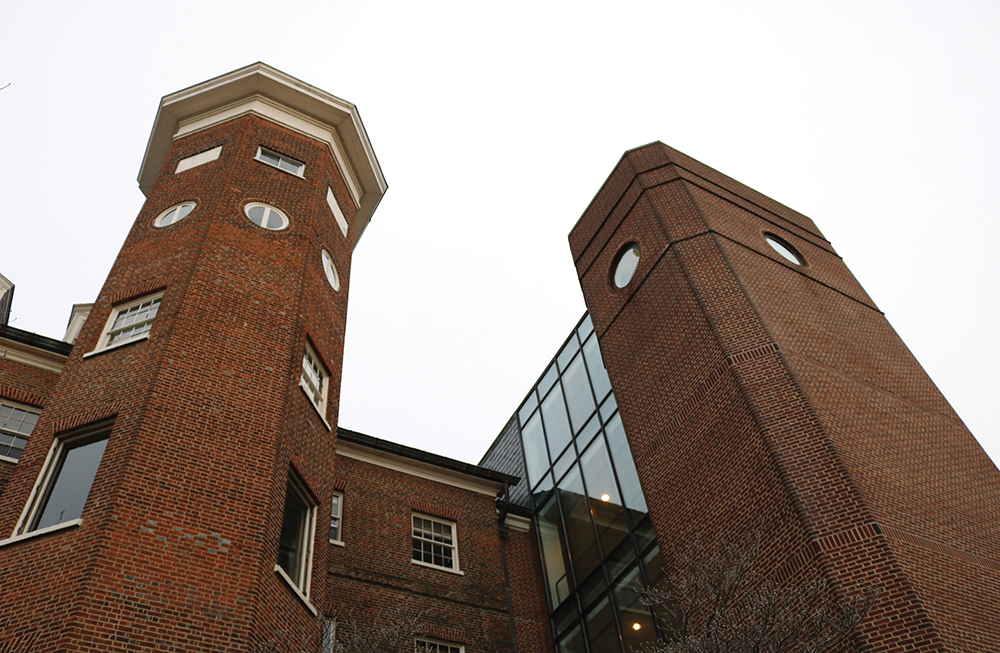The medieval studies program was renamed the global medieval studies program as it diversifies its curriculum by including countries outside Western Europe, director Sarah McNamer announced in a March 28 email.
The change was partially inspired by an overall shift in academia away from perspectives centered on Western Europe to one that more accurately reflects a global approach to medieval studies, according to McNamer.
“In the past couple of years, it’s partly been a nationwide change where people are thinking very much about expanding the borders of what we think of as medieval,” McNamer said in an interview with The Hoya.
The name change comes after the theology and religious studies department updated its name in February 2019. The new name reflects the curriculum’s courses outside Christianity, which are often not referred to as theology, according to program administrators.
The name change is an important step toward addressing the university’s Euro-centric curriculum, according to Nabil Kapasi, who wrote a viewpoint in 2017 accusing the university of failing to fulfill its dedication to a global perspective. (Full disclosure: Kapasi is a former member of The Ho
“I wasn’t aware of the change in Medieval Studies program, but I think making the focus global is a great step to take,” Kapasi wrote in a message to The Hoya. “It’s awesome to see Georgetown recognizing and fixing existing biases in its curriculum.”

The program’s wider focus challenges misconceptions of the medieval world that have been prolonged because of the program’s limited scope in the past, according to to Michelle Wang, director of undergraduate studies in art history.
“Our emphasis on the ‘global’ also pushes back against simplistic and erroneous narratives that paint the medieval world as purely Eurocentric,” Wang wrote in an email to The Hoya.
The goal of the expansion is to provide students with an interdisciplinary curriculum that examines the Middle Ages outside Europe and specifically in Asia and Africa.
Broadening the program was a logical step for Georgetown as an internationally-minded institution, according to Timothy Newfield, assistant professor in the department of history.
“It only made sense to go global,” Newfield wrote in an email to The Hoya. “‘Middle Ages’ is a periodization used originally in Europe and for European history, but in recent decades scholars working on the premodern history of Central, East, South, Southeast and West Asia, as well as North and Sub-Saharan Africa have adopted the concept.”
In place of a foundation course focused on Western Europe, the program enforced a new requirement in the fall semester: Students of the major and minor need to take at least one class focusing on a geographic area outside of Europe and one class focusing on Europe.
The program is also developing a senior seminar for fall 2019 that aims to help students write their thesis on a broader range of topics, according to McNamer.
“With exposure to cultures that they may not have considered before, students are more likely to write theses that incorporate a global perspective in some way” McNamer wrote in an email to The Hoya.
The program is also working to establish a global medieval studies minor in the School of Foreign Service to continue the school’s effort to replace certificates with minors.
The honors track for majors, which previously required students to be proficient in Latin, or in recent years Arabic or Hebrew, now accepts proficiency in any language that facilitates research in global medieval studies.
The department also developed study abroad opportunities outside Europe to further its efforts to expand the discipline, according to Wang.
“It was exciting to read about the students’ research experiences in Zambia and the Middle East and for the faculty, it affirmed the necessity of being in the field in order to truly experience and understand the medieval world, both past and present,” Wang wrote. “This is important for faculty and students alike.”
Cross-cultural understanding, particularly for Western students, is critical to a successful curriculum, according to McNamer.
“Where it’s really interesting, important and sort of urgent is understanding other cultures beyond Western Europe,” McNamer said. “Also, students seem to really be interested in that.”
Though the changes are a welcomed development, the terminology of “medieval” still centers the program around European history, according to Kapasi.
“This might be appropriate for European history as it refers to the time between Rome and the Renaissance, but for the rest of the world it was not a ‘Middle Age,’” Kapasi wrote.




















